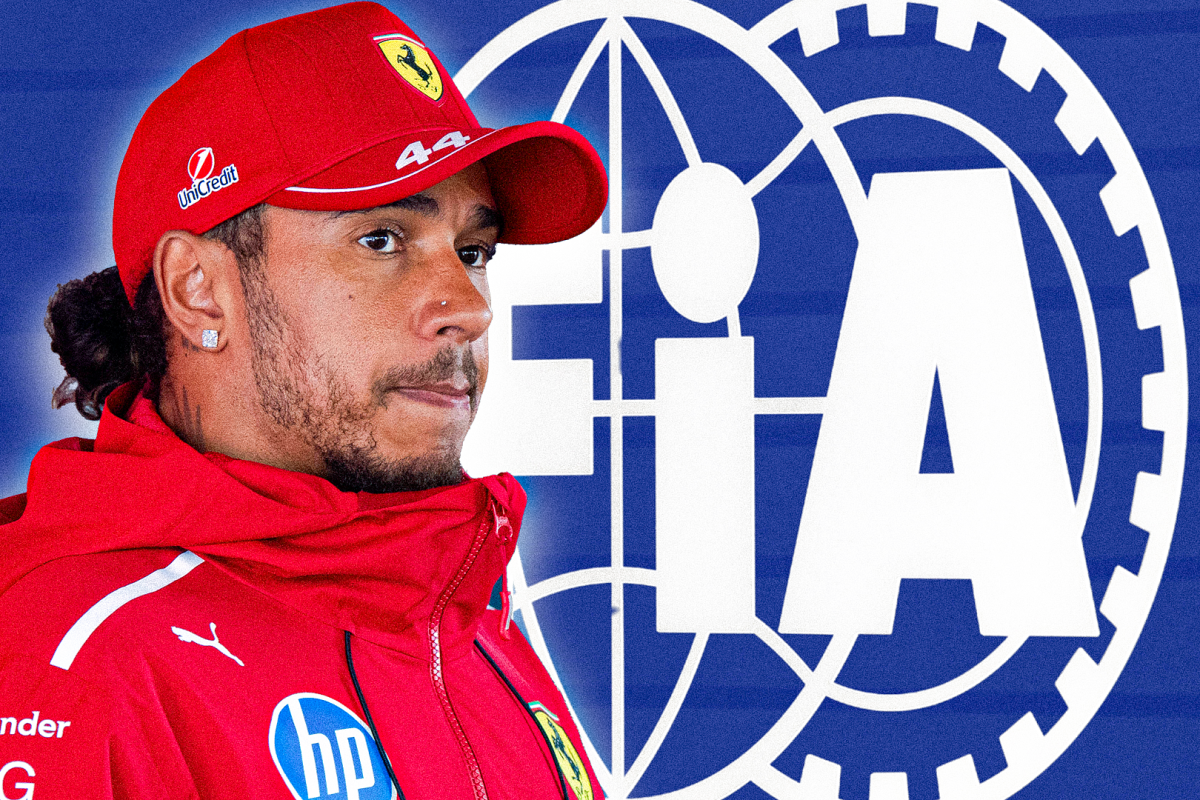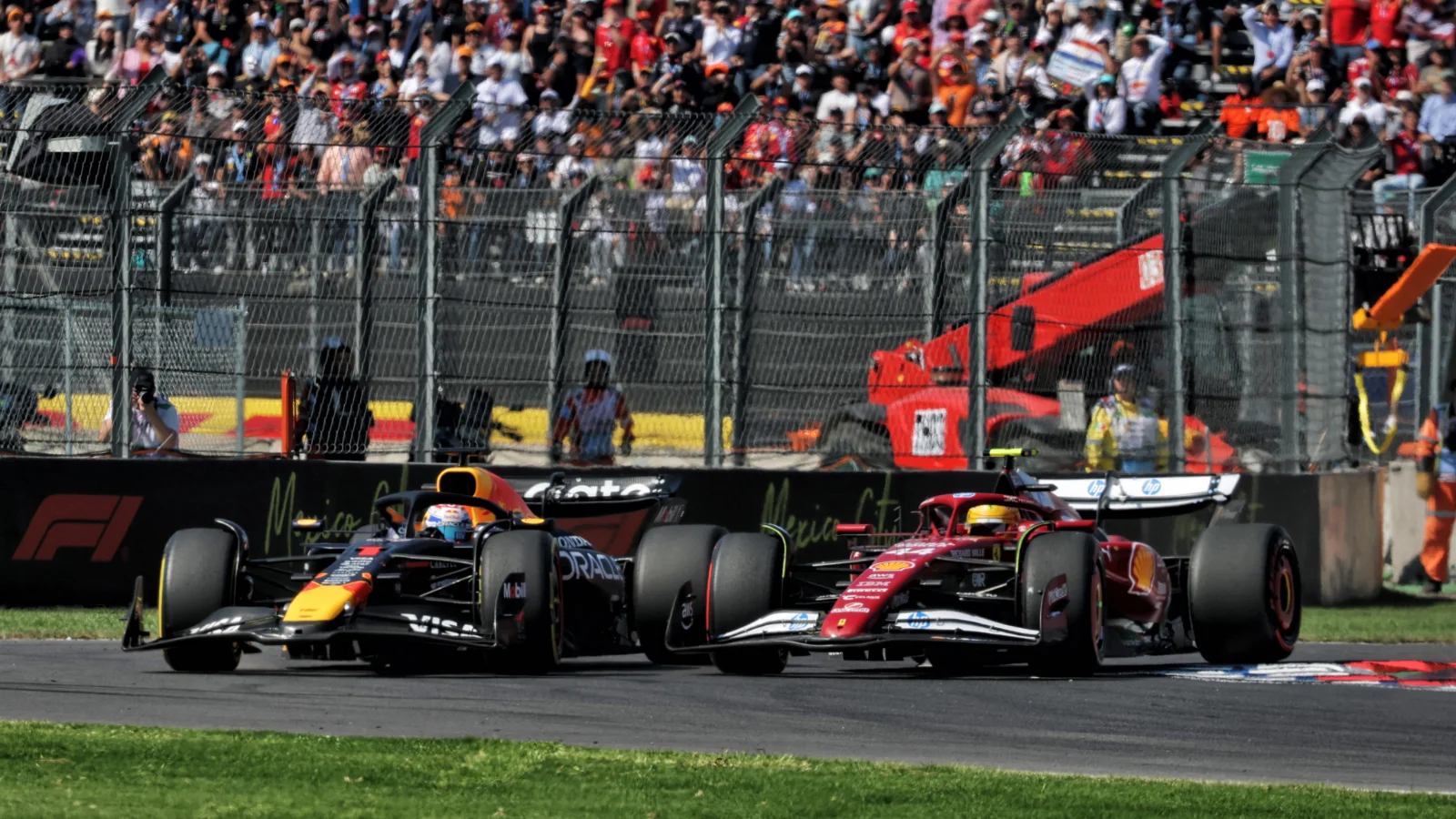The Autódromo Hermanos Rodríguez is a circuit that routinely spits out controversy, yet few moments have laid bare the philosophical chasm dividing modern Formula 1 quite like Lewis Hamilton’s lap 6 incident at the recent Mexican Grand Prix.
What looked like a routine off-track excursion under extreme pressure quickly devolved into a technical courtroom drama, where a fraction of a second—specifically, 0.43—was deemed a regulatory crime.
The resulting penalty, handed to the seven-time champion, wasn’t just a loss of points; it was a defining moment that revealed the fragile and often contradictory relationship between human instinct, high-altitude physics, and the unforgiving precision of driven regulation.

The Duel and the Dust: Instinct Meets the Limit
The stage was set from the moment the lights went out. The 900-meter run to Turn 1 in Mexico City is one of the longest sprints in the sport, a high-stakes lottery that often dictates the pace of the entire race. This time, it was a four-wide compression involving Hamilton, Max Verstappen, Lando Norris, and Oscar Piastri. Chaos, as the old F1 adage goes, was moving in slow motion. Hamilton’s Ferrari, the SF25, launched perfectly, showing the mechanical grip that Scuderia engineers had modelled overnight, pulling him into the fight with Verstappen’s Red Bull.
However, the real controversy unfolded on Lap 6, through the fast, downhill braking zone of Turn 4. With Verstappen hunting aggressively, Hamilton defended the inside. At an altitude of 2,238 meters, where the atmosphere robs cars of up to 25% of their baseline downforce, the margin for error shrinks to near invisibility. Under braking, the Ferrari’s front wheels locked. Hamilton went straight, cutting across the grass and rejoining the track ahead of Verstappen by a critical car length.
To the naked eye, it was a momentary loss of adhesion, a safe recovery by an experienced champion. But inside the FIA control room, the stopwatch had already begun ticking, not on the visible spectacle, but on the silent, numerical reality of the telemetry data streaming from the car.
The Cold Hard Truth of 0.43 Seconds
The ruling wasn’t based on intent, but on a single, damning number: 0.43 seconds.
Formula 1’s Article 33.3 decrees that a driver leaving the track must rejoin safely and must not gain a “lasting advantage.” On the GPS telemetry, the FIA’s analysis flagged a red delta, indicating that Hamilton had rejoined with a 0.43 second net advantage over Verstappen in that micro sector. That number, generated by hundreds of gigabytes of data flowing from the car, became the irrefutable evidence. To the regulator, position was all that mattered; the why was irrelevant.
However, the team at Maranello argued that the data only told half the story—the cold, hard what, but not the complex, human why.
Ferrari’s post-race debriefs, described as bordering on obsession, revealed two crucial details that challenged the narrative of a calculated gain. First, the incident was an inevitable result of the SF25’s design philosophy meeting the punishing altitude. The car is built on a high-load, high-drag configuration that delivers stability but is highly vulnerable to the thin Mexican air, which starves the aerosurfaces of density. Hamilton’s front wheels locked because the brake pressure peaked five bar higher than the modeled limit, and longitudinal grip fell by 17%—in essence, the car did not respond as predicted because the aerodynamic tools failed at altitude. It wasn’t driver error; it was the inevitable limit of the machine.
Second, the advantage was not sought, but merely inherited. Hamilton’s telemetry trace showed no throttle spike—no attempt to accelerate across the grass. The car was coasting through the run-off, speed bleeding off by nearly 23 km/h before rejoining. Furthermore, upon returning to the tarmac, his tires had picked up an estimated 20° of surface temperature, costing him valuable grip over the next three corners. For the Ferrari engineers, the off-track moment was self-correcting; the time gained was immediately erased by the subsequent loss of traction.
Yet, for the FIA, these nuances of physics and mechanical compromise were secondary. The data showed a temporary advantage in position that allowed Hamilton to hold off the threat, and that was enough to warrant a penalty.

The Paradox of Precision and Precedent
The controversy in Mexico is a perfect illustration of Formula 1’s eternal paradox: a championship defined by milliseconds, yet governed by subjective interpretation. If the rule is about a “lasting advantage,” did a four-tenths gain immediately nullified by subsequent grip loss truly constitute a lasting advantage?
This question was amplified by the comparison to Max Verstappen’s own Lap 1 excursion. The data showed Verstappen had also taken a shortcut and gained approximately 0.21 seconds in speed, yet the stewards judged “no clear gain” and avoided a review. For Ferrari, the conclusion was simple and damning: the imbalance was not in the rule, but in its application. Either both moments deserved a review, or neither did. The perception of inconsistency, where two similar errors yield two different results, is corrosive to the sport’s reputation for fairness.
This moment echoes Sebastian Vettel’s famous penalty at the 2019 Canadian Grand Prix, where he was punished for rejoining the track unsafely after an excursion while defending from Hamilton. His furious, on-team radio cry of, “They’re stealing the race from us!” remains a powerful reminder that F1 does not always punish the outcome; it punishes the optics, and, increasingly, the data trace. In both cases, human instinct—a driver making a correction to mechanical instability—was condemned by a regulatory framework that seeks to legislate precision as if it were synonymous with intent.
The Shaken Trust of a Champion
The impact of the ruling extended far beyond the official race standings. Lewis Hamilton’s immediate post-race interview was characterized by frustration, mentioning “no grip at all” and simply trying to “bring it back to the track safely” . This external calm, however, masked an internal recalibration. For a champion whose career is defined by driving on instinct, the penalty was a moment that “shook” his trust, not just in the car’s limitations, but in the process designed to judge him.
Inside the Maranello walls, the debrief wasn’t a protest session but an intensive technical analysis to understand why the system failed to account for context. The conclusion, quietly profound, was that while the SF25 worked exactly as designed, the regulation, in its rigid application, did not. It was an admission without accusation: the system built to ensure equality ended up penalizing authenticity and human decision-making under extreme pressure.

A Scar on the Collective Experience
Formula 1 has evolved into an ecosystem where gigabytes of telemetry data have become both evidence and weapon. The rules can quantify contact distance and time, but they cannot quantify decision-making under pressure. Hamilton’s incident was neither heroic nor reckless; it was a data point that revealed the fundamental limits of modern fairness.
The Mexico Grand Prix of 2025 will not define the championship battle, but it may define its conscience. Just as Vettel’s Canada penalty became shorthand for overregulation, Hamilton’s will serve as the modern reference point for where clarity ends and control begins. Drivers will quietly adjust their strategy around it; teams will factor altitude-induced loss of downforce into their risk assessments; and the FIA will inevitably review the vague language of “lasting advantage.”
The truth is, even a perfect regulation can yield imperfect justice. Formula 1 is a sport built on decimal precision but governed by the weight of interpretation. When they packed up the garage that night, the Ferrari that rolled into the freight container was symbolic of a team learning that sometimes, the defining moment of a season isn’t measured in a tenth of a second, but in how long it takes to recover belief. The gray area between numbers and nerves is where the sport’s meaning—and its enduring controversies—will always reside.